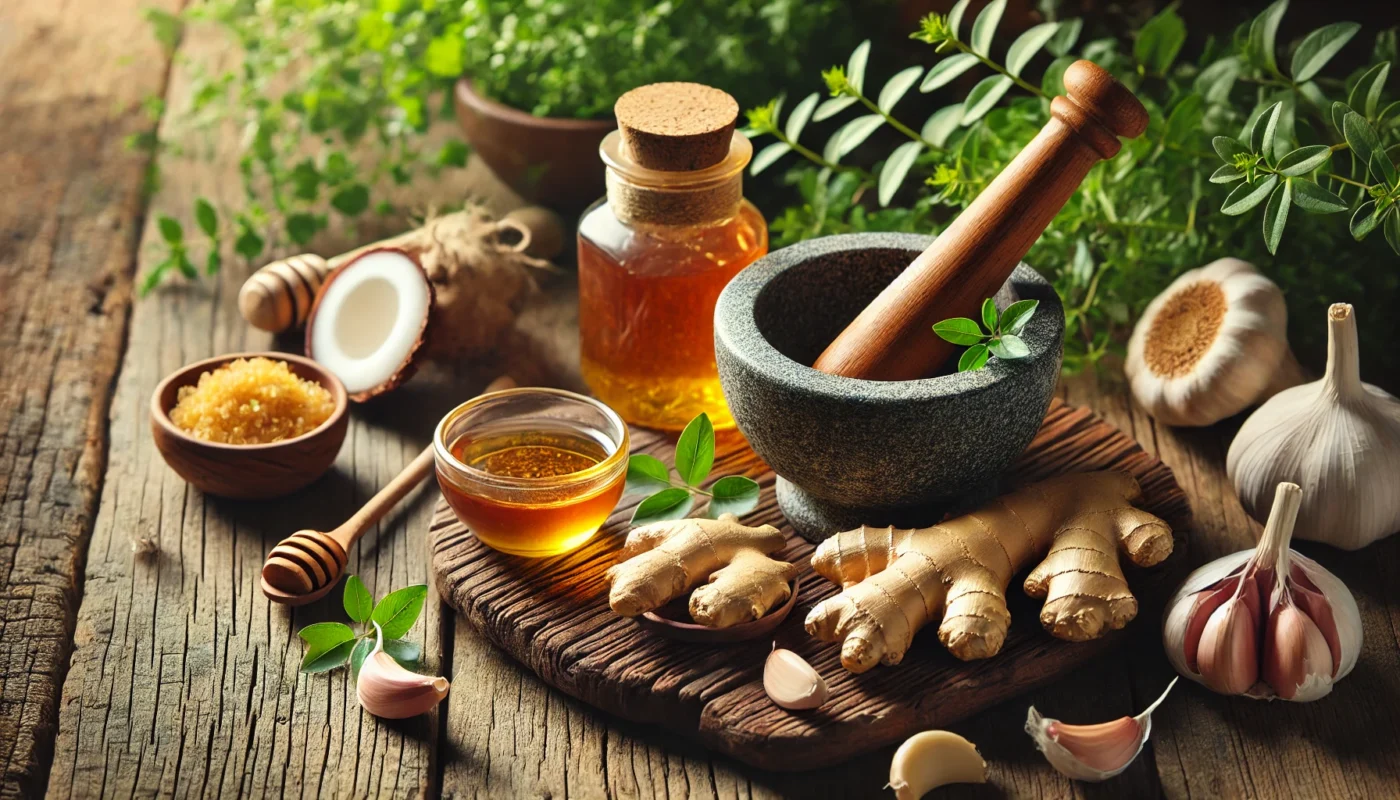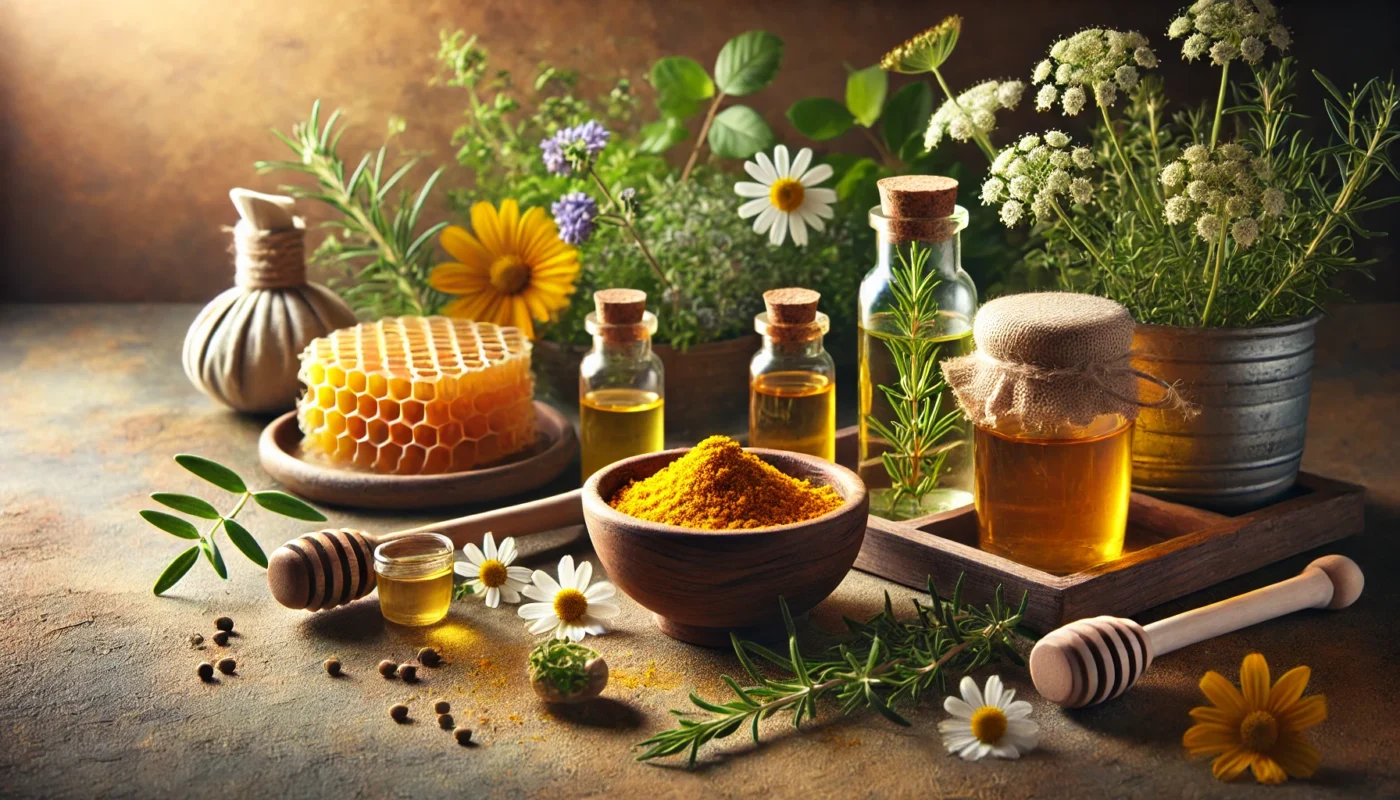In the hustle and bustle of daily life, minor injuries like cuts and scrapes can happen unexpectedly. While these might seem trivial at first, they can lead to infections if not properly cared for, especially if they involve pus or become smelly. If you find yourself with an infected cut, you may be seeking home remedies to naturally accelerate healing. In this comprehensive guide, we’ll delve into effective natural remedies for treating infected wounds and cuts, providing you with practical advice to ensure optimal healing.
You may also like: Magnesium Glycinate for Immunity: Can It Help Fight Infections?
Understanding Cut Infections
Before diving into remedies, it’s essential to understand what causes a cut to become infected. When the skin is breached, bacteria can enter the wound, leading to infection. Signs of an infected cut include redness, swelling, warmth, pus, and pain. In severe cases, fever and a foul odor may also be present. While minor infections can often be managed at home, severe or persistent infections require medical attention.
Causes of Cut Infections
Cuts can become infected due to the presence of bacteria, fungi, or viruses. The most common culprits are bacteria like Staphylococcus aureus. Improper wound care, such as not cleaning the cut properly or exposing it to dirt and moisture, can increase the risk of infection. Understanding these factors can help you take preventive measures to avoid infections.
Symptoms to Watch For
Recognizing the symptoms of an infected cut early can prevent complications. Apart from the visible signs like redness and swelling, be alert for increasing pain or tenderness around the wound. A wound that feels warm to the touch or is oozing pus requires immediate attention. In some cases, systemic symptoms like fever or swollen lymph nodes may indicate a more severe infection.
When to Seek Medical Help
While many minor infections can be treated at home, it’s crucial to know when to see a doctor. If the infection does not improve within a few days of home treatment, or if you experience a high fever, severe pain, or red streaks near the wound, seek medical attention promptly. These signs may indicate a spreading infection that requires professional intervention.

Natural Antiseptics for Cuts
Natural antiseptics are your first line of defense against infection. They help clean the wound and prevent bacterial growth.
Tea Tree Oil
Tea tree oil is renowned for its antimicrobial properties. Dilute a few drops of tea tree oil with a carrier oil, such as coconut oil, and apply it to the infected area. This can help reduce the risk of further infection and promote healing.
How to Use Tea Tree Oil Safely
When using tea tree oil, ensure it’s properly diluted to prevent skin irritation. Mix a few drops with a tablespoon of carrier oil like olive or almond oil. Test the mixture on a small skin area before applying it to the wound. Apply using a clean cotton swab, and never ingest tea tree oil as it’s toxic when consumed.
Benefits Beyond Infection Control
Apart from fighting infections, tea tree oil can also reduce inflammation and speed up the healing process. Its natural antiseptic qualities make it a versatile option for various skin ailments. Incorporating tea tree oil into your regular skincare routine can also help prevent acne and other skin irritations.
Potential Side Effects
While tea tree oil is effective, it can cause allergic reactions in some individuals. If you experience redness, itching, or a rash after application, discontinue use immediately. Always store it in a cool, dark place to preserve its potency and ensure it’s out of reach of children.
Honey
Raw honey, particularly Manuka honey, is a potent natural antiseptic. Its high sugar content and low pH can inhibit bacterial growth. Apply a thin layer of honey directly to the wound and cover it with a sterile bandage. Change the dressing daily.
Choosing the Right Honey
Not all honey is created equal. Manuka honey, originating from New Zealand, is specifically known for its medicinal properties. Look for honey with a high UMF (Unique Manuka Factor) rating to ensure its quality and effectiveness. The higher the UMF, the more potent the honey’s antibacterial properties.
Application Techniques
To maximize honey’s healing benefits, apply it with clean hands or a sterile applicator. Spread a thin layer over the wound, ensuring complete coverage. Cover with a breathable bandage to keep the area clean and promote faster healing. Reapply daily, especially after cleaning the wound.
Honey’s Additional Healing Properties
Beyond its antiseptic qualities, honey is also a natural humectant, which helps keep the wound moist and conducive to healing. Its soothing properties can reduce pain and inflammation, providing relief as the wound heals. Consuming honey can also boost your immune system and aid overall health.
Garlic
Garlic has been used for centuries as a natural antibiotic. Crush a garlic clove and mix it with a little coconut oil. Apply the mixture to the wound and cover it with a bandage for a few hours before rinsing it off.
Preparing Garlic for Wound Application
To harness garlic’s healing power, start by peeling a fresh garlic clove. Crush it thoroughly to release allicin, the compound responsible for its antimicrobial effects. Mix with coconut or olive oil to reduce the potency and potential irritation. Test on a small skin area before applying to the wound.
Frequency of Application
Apply the garlic mixture up to twice a day for optimal results. Leave it on the wound for no longer than two hours to prevent skin irritation. Rinse the area with lukewarm water and pat dry before reapplying the mixture. Consistent use can help combat infection and accelerate healing.
Internal Benefits of Garlic
Besides topical application, incorporating garlic into your diet can bolster your immune system. Its natural antibiotic properties can help fend off infections from within. Regular consumption of raw or cooked garlic can contribute to overall health and reduce the risk of future infections.
Herbs That Heal Internal Wounds Fast
Some herbs can aid in healing not only external cuts but also internal wounds. These herbs are typically consumed in tea or supplement form.
Calendula
Calendula, or marigold, has anti-inflammatory and healing properties. It can be used topically as an ointment or consumed as a tea to aid in the healing of both internal and external wounds.
Topical vs. Internal Use
Calendula can be applied directly to wounds in ointment form to reduce inflammation and promote healing. When consumed as tea, it can support internal healing and boost the immune system. Choose the method that best suits your needs or combine both for comprehensive healing support.
Preparing Calendula Tea
To make calendula tea, steep dried calendula flowers in hot water for 10-15 minutes. Strain and drink up to two cups daily to support the body’s natural healing processes. The tea can also be used as a rinse for topical wounds, offering dual benefits.
Additional Benefits
Beyond wound healing, calendula can soothe irritated skin and aid in digestive health. Its anti-inflammatory properties make it beneficial for conditions like eczema and dermatitis. Regular use can contribute to a healthier, more resilient body.
Echinacea
Echinacea boosts the immune system and can help fight infections. It’s often taken as a tea or supplement to support the body’s natural defenses against infections.
Immune System Support
Echinacea is well-known for its ability to enhance immune function. Taking it during the early stages of infection can reduce severity and duration. Regular supplementation, especially during flu season, can keep your immune defenses strong.
Different Forms of Echinacea
Available in teas, capsules, and tinctures, echinacea can be easily incorporated into your daily routine. Choose a form that fits your lifestyle, and follow the recommended dosage. For acute infections, a combination of forms may provide the best results.
Potential Side Effects
While generally safe, echinacea can cause allergic reactions in some individuals, especially those with allergies to ragweed. If you experience any adverse effects, discontinue use and consult a healthcare professional. Long-term use is not recommended, so cycle off periodically to maintain efficacy.
Turmeric
Turmeric contains curcumin, a compound with powerful anti-inflammatory and antimicrobial properties. You can create a paste with turmeric powder and water to apply to a wound, or consume it in food or tea to aid internal healing.
Making a Turmeric Paste
To create a paste, mix turmeric powder with water or coconut oil until it reaches a thick consistency. Apply directly to the wound and cover with a bandage. Leave for 1-2 hours before rinsing. Repeat this process daily for best results.
Incorporating Turmeric in Your Diet
Adding turmeric to your diet can enhance its healing effects. Use it in curries, soups, or smoothies to benefit from its anti-inflammatory properties. Drinking turmeric tea or golden milk can also support internal healing and immune function.
Precautions When Using Turmeric
While turmeric is generally safe, excessive consumption can cause digestive issues. Consult with a healthcare provider before taking high doses, especially if you are pregnant or have gallbladder issues. Combining turmeric with black pepper can enhance its absorption and effectiveness.

Natural Remedies for Open Sores
Open sores require careful management to prevent infection and promote healing. Here are some natural remedies to consider:
Aloe Vera
Aloe vera is soothing and has antibacterial properties. Apply aloe vera gel directly from the plant to the sore to reduce inflammation and promote healing.
Extracting Aloe Vera Gel
To extract gel, cut a mature aloe vera leaf and scoop out the clear gel. Apply directly to the sore for instant soothing relief. Aloe vera can be applied several times a day to keep the sore moist and promote healing.
Benefits Beyond Healing
Aloe vera is not only effective for sores but also beneficial for burns, sunburns, and other skin irritations. Its hydrating properties make it a great addition to skincare routines. Regular use can improve skin elasticity and overall health.
Potential Allergic Reactions
While aloe vera is gentle, it can cause allergic reactions in rare cases. Perform a patch test before full application, especially if you have sensitive skin. If any irritation occurs, discontinue use immediately.
Coconut Oil
Coconut oil acts as a natural moisturizer and has antimicrobial properties. Applying coconut oil to a sore can keep the area hydrated and create a barrier against bacteria.
Choosing the Right Coconut Oil
Opt for virgin or extra-virgin coconut oil for the best results. These forms retain more of the natural compounds that provide antimicrobial benefits. Avoid refined oils, which may lack the necessary healing properties.
Application Tips
Apply coconut oil with clean hands, covering the sore completely. Reapply as needed, especially after washing the area. Its moisturizing properties can prevent the sore from drying out and cracking, which can slow healing.
Additional Uses
Beyond sore treatment, coconut oil can be used for overall skin health. It’s an effective makeup remover, hair conditioner, and can even be used in cooking. Its versatility makes it a valuable addition to any natural remedy toolkit.
Witch Hazel
Witch hazel is a natural astringent and can help reduce swelling and inflammation. Dab a cotton ball soaked in witch hazel on the sore to clean the area and promote healing.
How to Apply Witch Hazel
Use a clean cotton ball or pad to apply witch hazel to the sore. Gently dab without rubbing to avoid irritating the skin. Apply twice daily for best results, and consider combining with other remedies for enhanced healing.
Sourcing Quality Witch Hazel
Choose witch hazel that is alcohol-free to avoid drying out the skin. Products with added fragrances or colors should be avoided. Pure witch hazel is the most effective for healing purposes.
Other Benefits
Witch hazel can also be used to treat acne, hemorrhoids, and varicose veins. Its ability to tighten skin and reduce inflammation makes it a versatile natural remedy. Including it in your skincare routine can improve skin tone and reduce irritation.
How to Treat Infection at Home
Treating infections at home requires a careful approach to ensure effective healing and prevent complications.
Clean the Wound
The first step in treating an infected cut at home is cleaning it thoroughly. Rinse the wound with clean water and mild soap to remove debris and bacteria.
Proper Cleaning Techniques
Use lukewarm water and a gentle soap to clean the wound. Avoid harsh chemicals or scrubbing, which can worsen the infection. Pat the area dry with a clean towel, ensuring no moisture is trapped in the wound.
Frequency of Cleaning
Clean the wound at least twice a day, or more if the area becomes dirty or wet. Regular cleaning is essential to prevent bacteria buildup and promote healing. If you notice any debris or pus, clean immediately.
Alternative Cleaning Solutions
For sensitive skin, saline solution can be an effective alternative to soap and water. It is gentle yet effective at removing bacteria and debris. This method can be especially beneficial for those with allergies or skin sensitivities.
Apply a Natural Antiseptic
Once the wound is clean, apply a natural antiseptic like honey or tea tree oil to prevent further bacterial growth.
Ensuring Proper Application
Use a sterile applicator or clean hands to apply the antiseptic. Cover the wound completely, ensuring no exposed areas are left untreated. This barrier will protect against environmental contaminants.
Combining Antiseptics
For more severe infections, combining different natural antiseptics can enhance healing. For instance, apply honey first, then follow with a diluted tea tree oil application. Always monitor the wound’s reaction to new treatments.
Storing Antiseptics
Store antiseptics in a cool, dark place to maintain their potency. Ensure lids are tightly sealed to prevent contamination. Regularly check expiration dates and replace as needed to ensure effectiveness.
Keep It Covered
Cover the wound with a sterile bandage to protect it from environmental contaminants. Change the bandage daily or whenever it becomes wet or dirty.
Choosing the Right Bandage
Select a breathable, sterile bandage that suits the wound’s size and location. Avoid adhesive materials that irritate the skin. Non-stick pads are ideal for wounds that are healing and oozing.
Bandage Changing Tips
Change the bandage at least once a day, or more if it becomes damp or dirty. When changing, inspect the wound for any signs of worsening infection. Clean the area before reapplying a new bandage to ensure ongoing protection.
Alternatives to Traditional Bandages
For larger wounds, consider using gauze and medical tape for a secure fit. Silicone-based dressings are another option, particularly for sensitive skin. These alternatives can offer additional comfort and flexibility.
Monitor the Infection
Keep a close eye on the wound for signs of worsening infection. If symptoms persist or worsen, seek medical advice promptly.
What to Look For
Monitor for increased redness, swelling, or pain around the wound. Any discharge, especially if it’s thick or foul-smelling, indicates a need for medical intervention. Systemic symptoms like fever require immediate attention.
Documenting Changes
Keep a daily log of the wound’s condition, noting any changes in appearance or symptoms. Photographs can help track progress and identify any issues early. This documentation can be useful if you need to consult a healthcare professional.
When to Reassess Treatment
If no improvement is seen after a few days of home treatment, reconsider your approach. It may be necessary to try different remedies or seek medical advice. Prompt action can prevent complications and promote faster healing.

Home Remedy for Smelly Wounds
A foul odor from a wound can indicate a severe infection. While natural remedies can help, it’s crucial to consult a healthcare professional if the odor persists.
Apple Cider Vinegar
Apple cider vinegar has antibacterial properties and can help neutralize odor. Dilute apple cider vinegar with water and gently dab it on the affected area. Avoid using undiluted vinegar, as it may irritate the skin.
Dilution and Application
Mix one part apple cider vinegar with three parts water for a safe dilution. Use a clean cotton pad to apply gently, avoiding any open or raw areas. Rinse after a few minutes to prevent irritation.
Additional Odor Control
Consider combining apple cider vinegar with baking soda for enhanced odor control. Make a paste and apply it to the wound, leaving it for a short period before rinsing. This combination can neutralize odors effectively while soothing the skin.
Monitoring for Reactions
Apple cider vinegar can cause stinging upon application, especially on open wounds. If discomfort persists, rinse immediately and discontinue use. Always test on a small area first to gauge skin sensitivity.
Conclusion
Natural remedies offer a holistic approach to managing and healing cut infections. With the right care and attention, minor infections can be resolved at home, promoting faster recovery and preventing complications. Always remember, if an infection seems severe or does not improve with home treatment, it’s important to seek medical attention.
By incorporating these natural strategies into your wound care routine, you’ll be equipped to handle minor cut infections with confidence and ease. Here’s to swift healing and maintaining optimal health naturally!
Further Reading:
How to Help Open Wounds Heal Faster: A Comprehensive Guide
coconut oil, witch hazel, natural remedies, skin health, wound care, infection treatment, home remedies, apple cider vinegar, antiseptics, skincare routine, healing, inflammation, acne treatment, natural astringent, odor control
Important Note: The information contained in this article is for general informational purposes only, and should not be construed as health or medical advice, nor is it intended to diagnose, prevent, treat, or cure any disease or health condition. Before embarking on any diet, fitness regimen, or program of nutritional supplementation, it is advisable to consult your healthcare professional in order to determine its safety and probable efficacy in terms of your individual state of health.
Regarding Nutritional Supplements Or Other Non-Prescription Health Products: If any nutritional supplements or other non-prescription health products are mentioned in the foregoing article, any claims or statements made about them have not been evaluated by the U.S. Food and Drug Administration, and such nutritional supplements or other health products are not intended to diagnose, treat, cure, or prevent any disease.

